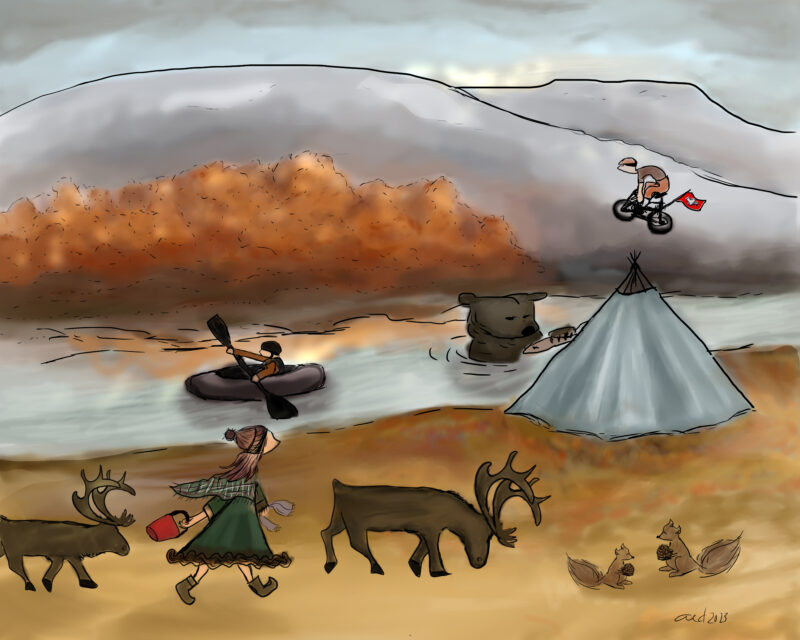“How are we going to balance the counterparts?”
By Alexandra Meyer
In the Innovative Polar Reserve scenario, nature conservation and Sami rights are prioritized over industrial development, and large infrastructural projects are halted. There is a focus on green transportation and sustainable tourism and the population declines. The discussions revealed tensions between environmental protection, Sámi rights, and the need for regional development.
Environmental protection, green transition, and prioritizing Sámi rights were assessed positively for the most part. Yet, the participants highlighted the dilemma between nature conservation and industrial/infrastructure development.
“We want to take care of the environment, we want to be green, we want to have nature untouched, and so on. At the same time as we want the industry to develop, we want more people. But how are we going to balance those counterparts?”
In addition, there was a concern about the region becoming a sort of nature reserve at the expense of growth. Participants worried that, without infrastructure and industry, the region would struggle for its future. Several participants reacted negatively to the notion of a “reserve,” pointing out that it alludes to a zoo where nature and the Sámi would be on display for tourists. Others believed that transforming most of Finnmark into a protected area would make it less attractive for newcomers.
The need for a balanced approach was a recurring theme:
“If you want growth and to get people to stay here with interesting jobs, then there has to be some industry. We don’t have to grow endlessly, but we can combine things.”
Others emphasized that protecting nature and supporting Sámi rights doesn’t have to conflict with development, and that compromises are both possible and necessary.
The discussions revealed a lot of uncertainties surrounding infrastructural development, in particular what one participant referred to as the “three big things”: the mine, the railway to Finland, and the harbor.
“The municipality wants to develop and increase the population, but we’ve abandoned the mine, seaport, and railway projects. That makes me wonder: What are we going to do here then?”
A significant point of frustration was how the scenario seemed to pit reindeer herders’ rights against development. The way the scenario was formulated, portrayed Sámi reindeer herders as against all development, which has the potential to fuel up under existing conflicts in the region. In this regard, others stressed that Sámi rights don’t equal reindeer herding rights, and that “the Sámi population” is not a single unit, but rather a diverse group with different interests.
Many agreed that parts of the scenario, in particular the mine closure, transition to green transport, tourism, and depopulation, reflected reality and echoed existing developments and concerns within the community.
Regarding demography, depopulation emerged as a major concern. The participants worried about an aging and decreasing population and highlighted the importance of finding ways to make the region more attractive to young people and newcomers. In this context, the geopolitical significance of maintaining a population in the region was also highlighted:
“We are living on the border with Russia. Russia is not our friend. One of the most effective ways to secure the border is by having a sustainable society right here”
In conclusion, while participants supported environmental protection and Sámi rights, they emphasized the need for balanced development to ensure a sustainable, thriving community.
